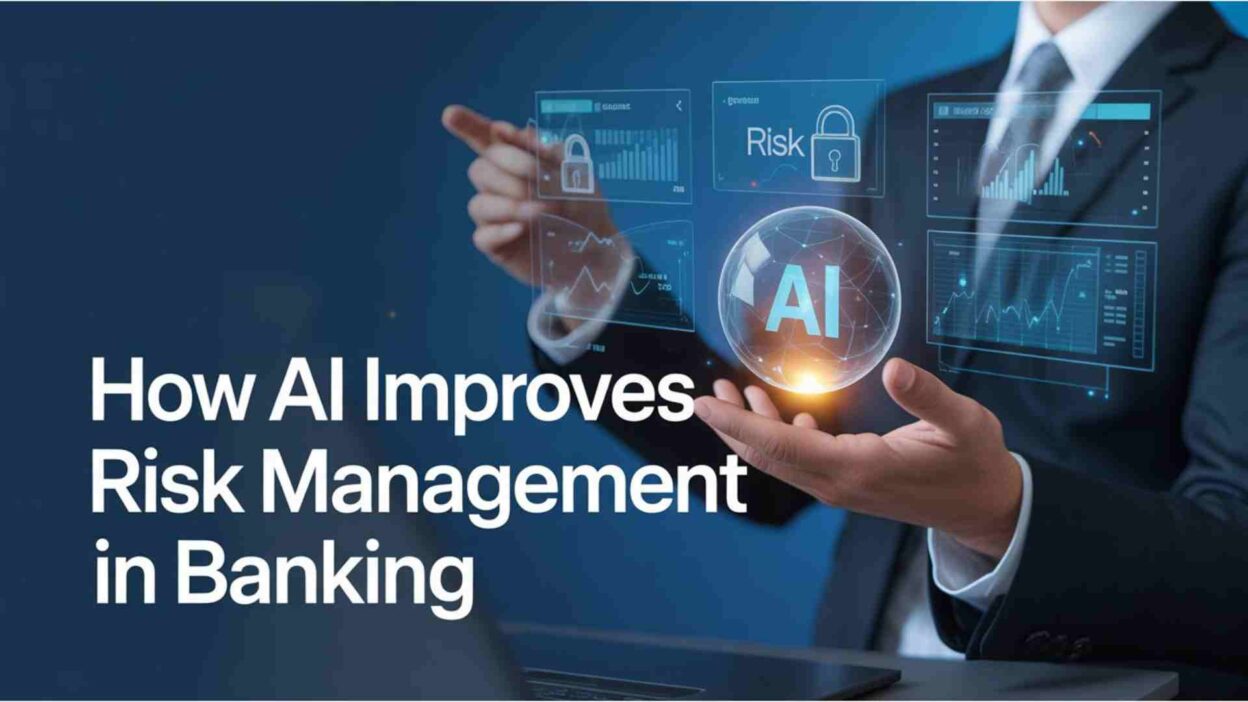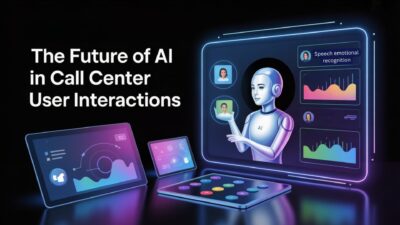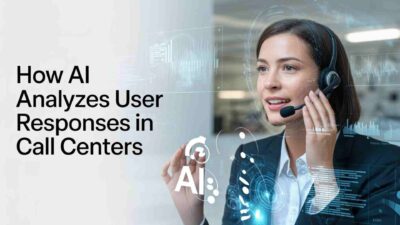TL;DR Banking institutions face countless risks daily. Traditional risk management methods struggle to keep pace with modern challenges. Artificial intelligence transforms how banks identify, assess, and mitigate these risks. The benefits of AI in banking risk assessment extend across every operational layer.
Table of Contents
Financial institutions now leverage machine learning algorithms to predict potential threats. These systems analyze massive datasets in seconds. Human analysts would need months to process the same information. Banks gain unprecedented insights into credit risks, fraud patterns, and market volatilities.
Understanding AI’s Role in Modern Banking Risk Management
Banks operate in an environment filled with uncertainties. Market fluctuations happen without warning. Cybercriminals develop sophisticated attack methods constantly. Regulatory requirements become more complex each year.
AI systems excel at pattern recognition. They detect anomalies humans might miss entirely. Machine learning models learn from historical data continuously. Their accuracy improves with each transaction processed.
The benefits of AI in banking risk assessment include real-time monitoring capabilities. Traditional methods rely on periodic reviews and manual checks. AI operates around the clock without breaks. It flags suspicious activities instantly.
Financial institutions deploy AI across multiple risk categories. Credit risk assessment uses predictive analytics. Market risk management leverages algorithmic trading insights. Operational risk prevention employs automated monitoring systems.
The Evolution from Traditional to AI-Driven Risk Management
Banks once depended entirely on human expertise. Risk officers reviewed transactions manually. They created reports using spreadsheet software. Decision-making processes took days or weeks.
This approach had serious limitations. Human analysts could only examine small data samples. Fatigue and bias affected their judgment. Critical patterns often went unnoticed.
AI eliminates these bottlenecks completely. Neural networks process billions of data points simultaneously. They identify correlations across seemingly unrelated variables. Predictive models forecast risks before they materialize.
Key Technologies Powering AI Risk Management
Machine learning forms the foundation of modern risk systems. Supervised learning algorithms train on labeled historical data. They recognize patterns indicating potential defaults or frauds.
Natural language processing analyzes unstructured data sources. AI reads news articles, social media posts, and regulatory filings. It extracts relevant risk signals from text-heavy documents.
Deep learning networks handle complex, multi-layered risk scenarios. They model non-linear relationships between risk factors. These systems adapt to changing market conditions automatically.
Computer vision technology scans documents for authenticity verification. It detects forged signatures and altered financial statements. This capability strengthens fraud prevention measures significantly.
Credit Risk Assessment Through Artificial Intelligence
Credit decisions determine a bank’s profitability and stability. Poor lending choices lead to massive financial losses. Traditional credit scoring relies on limited historical data.
AI revolutionizes creditworthiness evaluation completely. Machine learning models analyze hundreds of variables simultaneously. They consider employment history, spending patterns, and social behaviors. AI in operational risk management extends to credit portfolio optimization.
Banks now approve loans faster with greater accuracy. AI systems evaluate applications in minutes instead of days. They reduce human bias in lending decisions. Approval rates increase for creditworthy borrowers.
Alternative Data Sources for Enhanced Credit Scoring
Traditional credit reports provide only partial borrower pictures. AI incorporates alternative data streams effectively. Mobile phone usage patterns reveal financial responsibility levels.
Utility payment histories demonstrate consistent obligation fulfillment. Rental payment records show long-term financial stability. Social media activity patterns indicate lifestyle and spending habits.
Machine learning algorithms weigh these unconventional data points carefully. They create comprehensive risk profiles for each applicant. The benefits of AI in banking risk assessment include reaching previously unbanked populations.
Microfinance institutions particularly benefit from this capability. They serve customers lacking traditional credit histories. AI enables them to make informed lending decisions confidently.
Predictive Models for Default Prevention
Banks lose billions annually to loan defaults. Early warning systems prove invaluable for loss prevention. AI predicts which borrowers might default months in advance.
Predictive analytics examine behavioral changes indicating financial distress. Sudden decreases in account balances trigger alerts. Unusual transaction patterns suggest employment or income problems.
Banks can intervene proactively when AI flags high-risk accounts. They offer restructuring options before defaults occur. This approach preserves customer relationships while minimizing losses.
Machine learning models continuously refine their predictions. They learn from every loan outcome in the portfolio. Accuracy rates improve steadily over time.
Fraud Detection and Prevention Using AI
Financial fraud costs the banking industry trillions annually. Criminals employ increasingly sophisticated techniques. Traditional rule-based systems fail against modern attack methods.
AI provides dynamic fraud detection capabilities banks desperately need. Neural networks identify fraudulent transactions with remarkable precision. They analyze transaction velocity, location data, and purchasing patterns.
Real-time fraud prevention protects customers and institutions simultaneously. AI systems block suspicious transactions before they complete. Legitimate purchases proceed without unnecessary friction.
Real-Time Transaction Monitoring
Banks process millions of transactions every hour. Human analysts cannot possibly review each one manually. AI systems monitor every transaction as it occurs.
Anomaly detection algorithms compare each transaction against established patterns. They consider customer history, typical spending ranges, and merchant categories. Deviations from normal behavior trigger immediate investigations.
The benefits of AI in banking risk assessment shine brightest in fraud prevention. False positive rates drop dramatically with machine learning. Customers experience fewer declined legitimate purchases.
AI adapts to individual customer behaviors over time. It learns your regular coffee shop visits differ from suspicious transactions. The system becomes smarter with continued use.
Advanced Identity Verification Techniques
Identity theft remains a major banking security concern. Criminals steal personal information to open fraudulent accounts. Traditional verification methods prove inadequate against sophisticated fraudsters.
AI-powered biometric authentication provides robust identity protection. Facial recognition confirms customer identities during account access. Voice analysis detects imitation attempts during phone banking.
Behavioral biometrics track unique user interaction patterns. The system monitors typing rhythms and mouse movement styles. These invisible markers prove difficult for fraudsters to replicate.
Multi-factor authentication systems incorporate AI decision engines. They assess risk levels for each login attempt. High-risk scenarios trigger additional verification steps automatically.
Market Risk Management and AI Analytics
Financial markets exhibit extreme volatility and complexity. Banks maintain substantial trading portfolios across asset classes. Market movements can generate enormous profits or devastating losses.
AI transforms how institutions manage market exposure risks. Algorithmic trading systems execute strategies based on predictive models. They respond to market changes in microseconds.
Portfolio optimization algorithms balance risk and return objectives automatically. They rebalance positions based on real-time market conditions. AI in operational risk management includes comprehensive market surveillance capabilities.
Predictive Analytics for Market Movements
Machine learning models forecast price movements across securities. They analyze historical patterns, economic indicators, and sentiment data. These predictions inform trading and hedging decisions.
AI processes news feeds from thousands of sources simultaneously. Natural language processing extracts market-moving information instantly. Trading algorithms react before human traders finish reading headlines.
Correlation analysis identifies hidden relationships between asset classes. AI discovers connections human analysts might never notice. These insights enable sophisticated hedging strategies.
Stress testing simulations predict portfolio performance under extreme scenarios. Banks prepare for market crashes and economic crises proactively. Risk managers allocate capital more efficiently using these insights.
Algorithmic Trading Risk Controls
Automated trading systems execute thousands of trades daily. These algorithms must operate within strict risk parameters. AI monitors algorithmic trading activity continuously.
Machine learning detects when algorithms behave unexpectedly. It identifies potential programming errors before significant losses occur. Emergency shutdown procedures activate when necessary.
The benefits of AI in banking risk assessment extend to regulatory compliance. AI ensures trading activities remain within legal boundaries. It flags potentially manipulative trading patterns automatically.
Backtesting frameworks validate trading strategies using historical data. AI simulates strategy performance across various market conditions. Banks deploy only thoroughly tested algorithms into production.
Operational Risk Management Through AI Solutions
Banks face numerous operational risks beyond financial markets. Technology failures disrupt customer services regularly. Human errors cause costly mistakes and compliance violations.
AI in operational risk management addresses these challenges comprehensively. Predictive maintenance algorithms prevent system outages before they happen. Process automation reduces human error rates dramatically.
Cybersecurity threats represent existential risks for financial institutions. AI-powered security systems defend against sophisticated cyberattacks. They identify vulnerabilities and respond to breaches instantly.
Cybersecurity and Threat Detection
Banks become cyberattack targets due to valuable financial data. Hackers develop new attack vectors constantly. Traditional security measures struggle against evolving threats.
AI security systems analyze network traffic patterns continuously. They detect unusual activities indicating potential breaches. Machine learning identifies zero-day exploits traditional antivirus misses.
Threat intelligence platforms aggregate data from global sources. AI correlates information to predict emerging attack campaigns. Security teams receive early warnings about targeted threats.
Automated response systems contain security incidents immediately. They isolate compromised systems to prevent lateral movement. Damage gets minimized through rapid AI-driven responses.
Process Automation and Error Reduction
Manual processes create numerous opportunities for mistakes. Data entry errors cause account discrepancies and customer complaints. Regulatory reporting mistakes result in substantial penalties.
Robotic process automation handles repetitive tasks flawlessly. AI bots process loan applications, account openings, and transaction reconciliations. Error rates drop to near-zero levels.
Natural language processing automates document review workflows. AI extracts information from contracts, agreements, and regulatory filings. Processing times decrease from hours to minutes.
The benefits of AI in banking risk assessment include improved operational efficiency. Staff focus on complex tasks requiring human judgment. Productivity increases while operational risks decrease.
Compliance Monitoring and Regulatory Reporting
Financial regulations grow more complex each year. Banks must comply with numerous national and international requirements. Manual compliance monitoring proves increasingly impractical.
AI systems track regulatory changes across multiple jurisdictions automatically. They update internal policies and procedures accordingly. Compliance teams receive alerts about new requirements immediately.
Transaction monitoring systems ensure anti-money laundering compliance. AI identifies suspicious patterns requiring regulatory reporting. It reduces false positives that waste investigator’s time.
Automated reporting systems generate regulatory submissions accurately. AI compiles required data from multiple internal systems. Reports get submitted on time without manual intervention.
Liquidity Risk Management with AI
Banks must maintain adequate liquidity to meet obligations. Cash flow mismanagement leads to insolvency and failures. Traditional liquidity forecasting relies on historical averages.
AI creates dynamic liquidity models responding to real-time conditions. Machine learning predicts cash flow needs with greater accuracy. Banks optimize their liquidity buffers efficiently.
Stress testing simulations model liquidity under crisis scenarios. AI helps banks prepare for sudden deposit withdrawals. Contingency funding plans become more realistic and actionable.
Cash Flow Forecasting and Optimization
Predictive analytics forecasts deposit and withdrawal patterns accurately. AI considers seasonal variations, economic trends, and customer behaviors. Banks maintain optimal cash positions without excess reserves.
Machine learning identifies early warning signs of liquidity pressures. It monitors inter-bank lending rates and market liquidity indicators. Risk managers receive advance notice of potential problems.
AI in operational risk management optimizes collateral management processes. Algorithms determine optimal collateral allocation across obligations. This reduces funding costs while meeting regulatory requirements.
Intraday liquidity management becomes possible with AI monitoring. Banks track payment flows in real-time throughout business days. They avoid overdraft penalties and payment failures.
Credit Portfolio Management Using AI
Banks maintain diverse loan portfolios across customer segments. Portfolio concentration risks require careful monitoring and management. AI provides comprehensive portfolio analytics capabilities.
Machine learning models assess correlations between portfolio segments. They identify concentration risks before they become problematic. Diversification strategies get optimized using AI recommendations.
Economic scenario analysis predicts portfolio performance under various conditions. Banks prepare for recessions, interest rate changes, and sector-specific shocks. Capital allocation decisions improve substantially.
Sector and Geographic Risk Analysis
AI analyzes exposure to specific industries and regions continuously. It monitors economic indicators relevant to each sector. Early warning systems alert managers about deteriorating conditions.
Natural language processing tracks news about industries within portfolios. AI identifies negative trends affecting borrower creditworthiness. Banks adjust exposure before losses materialize.
Geographic concentration analysis prevents excessive regional exposure. Machine learning models consider correlations between geographic areas. Portfolio managers receive recommendations for diversification opportunities.
The benefits of AI in banking risk assessment include dynamic portfolio rebalancing. AI suggests optimal portfolio compositions based on current conditions. Risk-adjusted returns improve through intelligent rebalancing.
Model Risk Management in AI Systems
Banks increasingly rely on AI models for critical decisions. These models themselves introduce new risks requiring management. Model validation and monitoring become essential activities.
AI models may produce biased or inaccurate predictions. They might fail when conditions change unexpectedly. Banks need robust frameworks for AI model governance.
Validation and Testing Frameworks
Independent validation teams assess AI model performance rigorously. They test models using holdout datasets and new scenarios. Validation processes ensure models meet performance standards.
Bias detection algorithms examine model outputs for discrimination. They verify fair treatment across demographic groups. Banks avoid regulatory penalties and reputational damage.
Explainability frameworks help humans understand AI decisions. Model interpretability tools reveal factors driving predictions. This transparency builds trust and supports regulatory compliance.
Continuous monitoring tracks model performance in production environments. AI systems detect when models degrade or produce anomalous outputs. Alerts trigger retraining or replacement procedures.
Ongoing Model Performance Monitoring
Production models require constant performance surveillance. AI monitors prediction accuracy against actual outcomes continuously. Performance metrics get reported to risk committees regularly.
Drift detection algorithms identify when data distributions change. Models trained on historical data may fail under new conditions. Retraining procedures activate automatically when drift occurs.
A/B testing frameworks compare different model versions safely. Banks deploy improved models only after proving superior performance. Rollback procedures restore previous versions if problems emerge.
Integration Challenges and Implementation Strategies
Deploying AI in banking environments presents significant challenges. Legacy systems dominate most financial institutions. Integration with existing infrastructure requires careful planning.
Data quality issues plague many AI implementation efforts. Models require clean, consistent data for accurate predictions. Banks must invest in data governance frameworks.
Data Infrastructure Requirements
AI systems need access to comprehensive, high-quality data. Banks must consolidate data from siloed departmental systems. Data lakes and warehouses provide centralized repositories.
Data cleansing procedures remove errors and inconsistencies. Standardization ensures uniform formats across sources. The benefits of AI in banking risk assessment depend on data quality.
Real-time data pipelines feed AI systems with current information. Stream processing technologies handle high-velocity transaction data. Batch processing handles historical analysis requirements.
Change Management and Workforce Training
Employees often resist AI adoption due to job security concerns. Change management programs address these fears proactively. Communication emphasizes how AI augments rather than replaces humans.
Training programs teach staff to work alongside AI systems. Risk managers learn to interpret AI outputs and recommendations. Technical teams develop skills in model development and maintenance.
Cultural transformation proves as important as technology deployment. Banks foster data-driven decision-making cultures. Success stories demonstrate AI value to skeptical stakeholders.
Regulatory Considerations for AI in Banking
Financial regulators scrutinize AI applications closely. They worry about model opacity and potential discrimination. Banks must demonstrate responsible AI usage.
Regulatory frameworks for AI continue evolving globally. Institutions must stay current with changing requirements. Compliance programs specifically address AI governance needs.
Explainability and Transparency Requirements
Regulators demand explanations for AI-driven decisions. Black-box models face increasing regulatory resistance. Explainable AI techniques make models more interpretable.
Documentation requirements for AI models prove extensive. Banks must explain data sources, training procedures, and validation results. Audit trails track model development and deployment processes.
The benefits of AI in banking risk assessment must be balanced against regulatory obligations. Banks cannot sacrifice compliance for performance. Responsible AI frameworks guide ethical deployment.
Fair Lending and Anti-Discrimination Compliance
AI models must not discriminate against protected classes. Regulators enforce fair lending laws strictly. Banks test models for disparate impact rigorously.
Bias mitigation techniques remove discriminatory patterns from models. Fairness constraints get incorporated into model training procedures. Ongoing monitoring ensures continued compliance.
Adverse action notices explain credit denials to applicants. AI systems generate explanations for regulatory purposes. Transparency builds customer trust and regulatory confidence.
Future Trends in AI Banking Risk Management
AI capabilities continue advancing at remarkable speeds. Quantum computing promises revolutionary risk modeling improvements. Banks investing in AI gain competitive advantages.
Federated learning enables collaborative model training across institutions. Banks share insights without exposing sensitive data. Industry-wide risk models improve as more data becomes available.
Emerging Technologies and Capabilities
Quantum machine learning will solve previously intractable risk problems. Portfolio optimization across millions of scenarios becomes possible. Risk calculations that once took days complete in seconds.
Edge computing brings AI capabilities to branch locations. Real-time risk assessments occur locally without network latency. Customer experiences improve dramatically.
Generative AI creates synthetic data for model training. Banks overcome data scarcity for rare risk events. Model robustness improves through diverse training scenarios.
Ethical AI and Responsible Innovation
Banks increasingly prioritize ethical AI development practices. Fairness, accountability, and transparency guide implementation decisions. Stakeholder trust depends on responsible AI usage.
AI governance committees oversee model development and deployment. They ensure alignment with institutional values and regulations. Risk management includes AI-specific risk categories.
The benefits of AI in banking risk assessment grow as technology matures. Banks committed to innovation will lead their industries. Those ignoring AI face existential competitive threats.
Measuring ROI and Business Impact
AI investments require substantial upfront costs. Banks must justify expenditures with measurable returns. Multiple metrics demonstrate the AI value proposition.
Loss prevention savings from fraud detection show immediate impact. Default prediction improvements reduce credit losses significantly. Operational efficiency gains decrease processing costs.
Key Performance Indicators for AI Risk Systems
Fraud detection rates measure system effectiveness directly. False positive reductions indicate improved accuracy. Customer satisfaction scores reflect better user experiences.
Credit loss provisions decrease as prediction accuracy improves. Portfolio performance metrics demonstrate risk management improvements. Regulatory penalty avoidance represents substantial savings.
Processing time reductions quantify operational efficiency gains. Employee productivity increases enable headcount optimization. The benefits of AI in banking risk assessment appear across numerous metrics.
Cost-Benefit Analysis Framework
Implementation costs include technology, data infrastructure, and personnel. Banks must account for ongoing maintenance and improvement expenses. Training and change management costs prove significant.
Benefit quantification requires baseline measurements before AI deployment. Controlled experiments compare AI and traditional methods. Incremental improvements get tracked over time.
Intangible benefits like reputation protection prove harder to quantify. Competitive positioning improvements may not show immediate financial returns. Long-term strategic value justifies continued AI investments.
Frequently Asked Questions
How does AI improve risk assessment accuracy in banks?
AI analyzes vastly more data than humans possibly could. Machine learning identifies patterns across millions of transactions. Predictive models forecast risks before they materialize. Accuracy improves continuously as systems learn from outcomes.
What are the main benefits of using AI in banking risk management?
The benefits of AI in banking risk assessment include real-time monitoring and faster decision-making. Banks detect fraud instantly and prevent losses proactively. Credit decisions become more accurate and less biased. Operational efficiency increases while costs decrease.
Can small banks afford AI risk management systems?
Cloud-based AI services make technology accessible to smaller institutions. Software-as-a-service models eliminate large upfront investments. Vendors offer solutions scaled to different bank sizes. The benefits of AI in banking risk assessment justify costs quickly.
How does AI handle operational risks differently than traditional methods?
AI in operational risk management provides continuous automated monitoring. Systems detect anomalies humans would miss entirely. Predictive maintenance prevents technology failures before occurrence. Response times to incidents decrease dramatically.
What data privacy concerns arise with AI in banking?
AI systems require access to sensitive customer information. Banks must implement strong data protection measures. Regulatory compliance frameworks address privacy requirements. Encryption and access controls protect data throughout processing.
Read More: Are Mobile Gambling Apps Legal Everywhere? Explained
Conclusion

Banks operate in environments filled with complex, evolving risks. Traditional risk management approaches cannot handle modern challenges effectively. The benefits of AI in banking risk assessment transform how institutions protect themselves.
AI provides unprecedented capabilities for identifying and mitigating threats. Machine learning models analyze massive datasets in real-time. They detect patterns humans would never notice independently.
Credit risk assessment becomes more accurate and inclusive. AI enables lending to previously underserved populations safely. Default predictions improve dramatically through advanced analytics.
Fraud prevention reaches new effectiveness levels with AI monitoring. Criminals find it increasingly difficult to penetrate intelligent defenses. Customers enjoy better protection without transaction friction.
AI in operational risk management addresses technology failures and human errors. Automated systems work tirelessly without fatigue or distraction. Cybersecurity defenses adapt to emerging threats continuously.
Market risk management benefits from predictive analytics and algorithmic trading. Banks optimize portfolios and execute strategies with precision. Stress testing prepares institutions for various crisis scenarios.
Implementation challenges exist but prove manageable with proper planning. Data infrastructure investments pay dividends across operations. Change management ensures smooth adoption by staff.
Regulatory compliance remains paramount throughout AI deployment. Banks must demonstrate responsible, ethical AI usage. Transparency and fairness build trust with regulators and customers.
Future AI capabilities promise even greater risk management improvements. Quantum computing and federated learning represent next frontiers. Banks investing in AI today position themselves for tomorrow’s success.
Financial institutions ignoring AI face serious competitive disadvantages. The technology fundamentally reshapes banking risk management practices. Leaders adopt AI to protect their organizations effectively.





